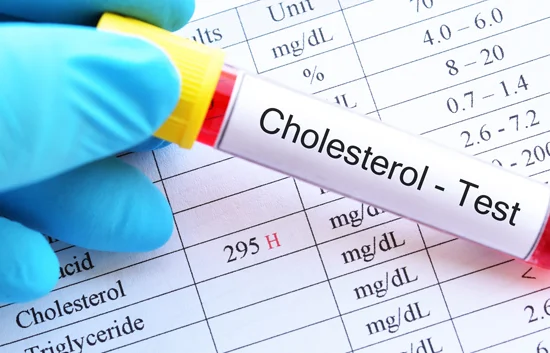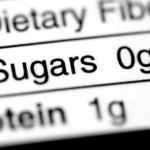Blood lipid profile as a key indicator of cardiovascular health
What is cholesterol?

Cholesterol is a lipid type essential to humans: it helps build cell membranes, synthesizes vitamin D (essential for the skin) and bile, and is an essential component of hormones, including hormones. Cholesterol can be produced by the human body, but it can also come from external sources, mainly from foods of animal origin.1
Although cholesterol is essential to the normal functioning of the human body, when in excess it may lead to serious heart conditions and even heart attacks.1 Cholesterol is a lipid that is transported by our circulatory system to the rest of the body. High-density lipoproteins (HDL), also called “good cholesterol,” transport excess low-density lipoproteins (LDL) to the liver, where it is eliminated.2 LDL’s role is to transport the cholesterol produced by the liver to the cells of the human body. LDL is a protein that is not dissolvable in blood, and so its excess (combined with low HDL levels to eliminate LDL) might lead to its deposition in the arteries, in the form of plaques.2 Eventually, these plaques might narrow and even block normal blood circulation, which may in turn lead to heart attacks and strokes.
A third component, called triglycerides, also play an important role as they produce energy for the body. Triglycerides comprise the most common type of fat in human body. They come from food, especially butter, oil, and other edible fats.3 High triglyceride levels are considered a risk factor in the development of cardiovascular diseases.2
Dyslipidemia refers to either low levels of HDL, or high levels of LDL and triglycerides in the blood.4 An LDL level less than 100 mg/dL is generally considered ideal.5 However, recommended LDL levels could be lower in cases involving various risk factors, such as age (>50 years for men and >60 years for women), tobacco use, other comorbidities (e.g., hypertension, diabetes), and a family history of heart disease. An HDL level higher than 40 mg/dL is considered optimal. Regarding triglyceride levels, a level below 150 mg/dL is considered ideal.5 The more risk factors there are, the more carefully the HDL–LDL ratio and triglycerides should be controlled.
Regular blood tests are recommended, to check cholesterol levels. For adults, cholesterol levels should be checked every four to six years.6 As individuals age, regular check-ups are necessary, and some people may need to check their cholesterol more frequently; this is the case for patients with heart disease, diabetes, or a family history of high cholesterol.6 Talk with your doctor about how frequently you should have your cholesterol levels checked. Additionally, he or she may examine cholesterol levels via a blood test called a lipid profile, which shows HDL, LDL, and triglyceride levels in terms of milligrams per deciliter (mg/dL) or grams per liter (g/l).
Total cholesterol (TC)7 = “good cholesterol” HDL + “bad cholesterol” LDL + VLDL
Suggested sentence – Very low-density lipoprotein (VLDL) is a type of lipoprotein produced by the liver that primarily carries triglycerides, which make up about 50% of its composition.8 A high VLDL level is associated with the risk of getting high cholesterol levels. The best way to lower one’s VLDL is to lower one’s triglycerides.
Blood cholesterol levels are measured in mg/dL.
The following table classifies the various cholesterol types and their levels.5
| Total cholesterol | |
| <200 mg/dL | Desirable |
| 200−239 mg/dL | Borderline high |
| >240 mg/dL | High |
| HDL cholesterol | |
| <40 mg/dL | Low |
| >60 mg/dL | High |
| LDL cholesterol | |
| <100 mg/dL | Optimal |
| 100−129 mg/dL | Near optimal/above optimal |
| 130−159 mg/dL | Borderline high |
| 160−189 mg/dL | High |
| >190 mg/dL | Very high |
| Triglycerides | |
| <150 mg/dL | Optimal |
| 150−199 mg/dL | Borderline high |
| 200−499 mg/dL | High |
| >500 mg/dL | Very high |
It is important to know that optimal cholesterol levels also depend on risk factors such as age, tobacco use, obesity, and diabetes. Each person is unique and has a different health profile.
Consult with your doctor who will assess and explain your cholesterol test results based on certain risk factors, in the context of age, sex, and family history. He or she can also help craft an action plan unique to you.












